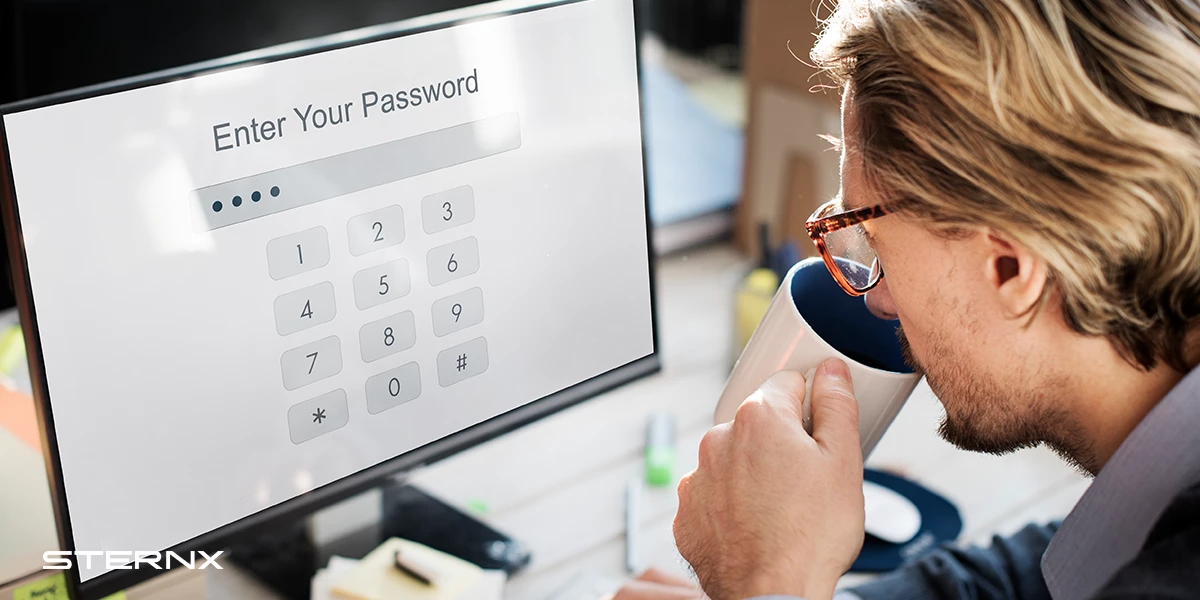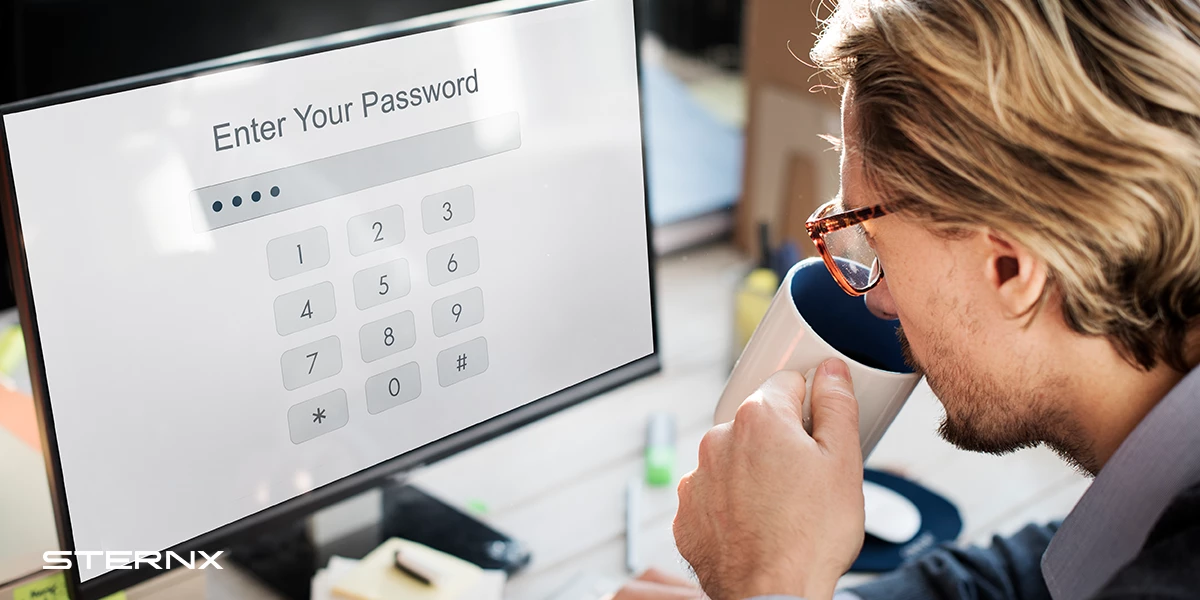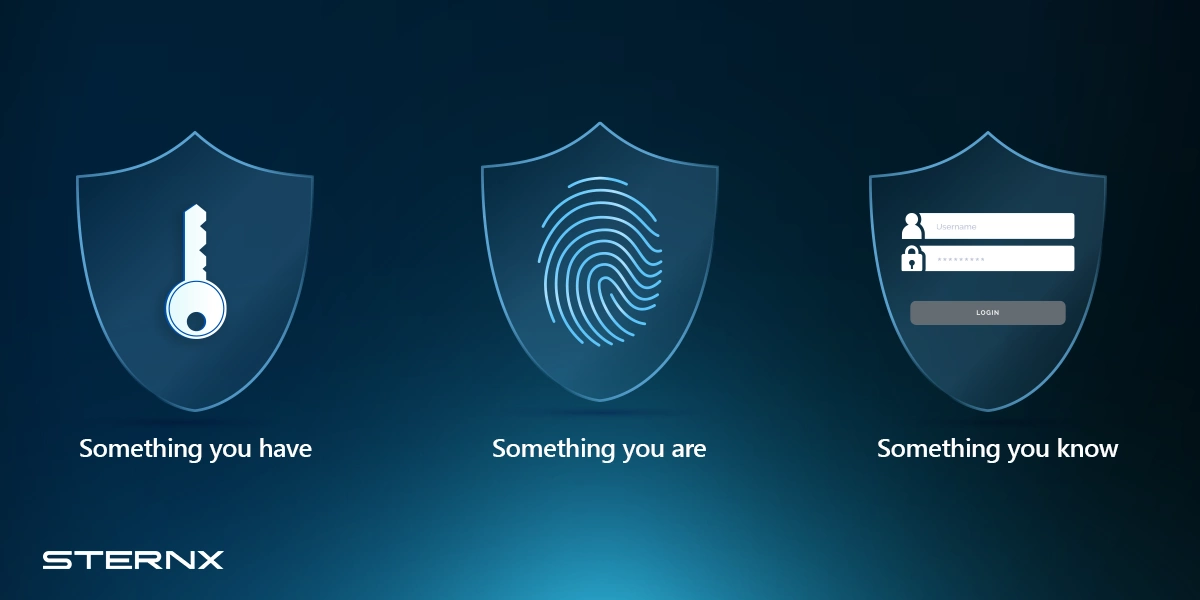
2024-3-11 17:22:9 Author: securityboulevard.com(查看原文) 阅读量:4 收藏
In today’s digital age, securing your online accounts and sensitive information is more crucial than ever. As cyber threats continue to evolve, traditional password-based authentication methods are no longer enough to safeguard your data. This is where multi-factor authentication (MFA) comes into play as an essential security measure. In this comprehensive guide, we’ll explore what MFA is, why it’s important, how it works, and the numerous benefits it offers.
What is Multi-Factor Authentication?
Multi-factor authentication, also known as MFA, is a security approach that requires users to provide two or more pieces of evidence (factors) to verify their identity when accessing an account, application, or system. These factors typically fall into three categories: something you know (like a password or PIN), something you have (like a security physical token or mobile device), and something you are (like a biometric characteristic such as a fingerprint or facial recognition).
By combining multiple factors, multi-factor authentication significantly increases the level of security and makes it much harder for unauthorized individuals to gain access, even if one factor is compromised.
Why is Multi-Factor Authentication Important?
In the digital world, where cyber threats are constantly evolving, relying solely on traditional passwords is no longer sufficient. Weak Passwords can be easily guessed, shared, or stolen through various means, such as phishing attacks, keyloggers, or data breaches. MFA adds an extra layer of protection by requiring additional verification factors, making it much more difficult for attackers to gain unauthorized access to your accounts or systems.
Moreover, with the rise of remote work and cloud computing, the need for robust authentication measures has become even more critical. It helps organizations secure their remote workforce and protect sensitive data, ensuring that only authorized individuals can access corporate resources.
How Does MFA Work & What are the Benefits?
MFA typically works by requiring users to provide two or more of the following factors:
Knowledge Factor: Something only the user knows, such as a username and password, PIN, or security question.
Possession Factor: Something the user has, like a mobile device, security token, authentication system, or USB key.
Inherence Factor: Something unique to the user, such as a biometric characteristic like a fingerprint, facial recognition, or voice recognition.
When a user attempts to log in or access a protected resource, they are prompted to provide the username and password for the first factor (usually a password). If the first factor is verified, the user is then prompted to provide a second factor, which could be a one-time code sent to their mobile device or a biometric scan. Only after successfully providing the required factors will the user be granted access.
Benefits of Implementing MFA
- Increased Security: By requiring multiple factors for authentication, MFA significantly reduces the risk of unauthorized access, even if one factor is compromised.
- Protection Against Phishing and Credential Theft: Even if an attacker manages to obtain a user’s password, they will be unable to gain access without possessing the additional factor(s).
- Compliance and Regulatory Requirements: Many industries and regulations, such as HIPAA, PCI-DSS, and GDPR, mandate the use of MFA to protect sensitive data and ensure compliance.
- Remote Access Security: MFA is crucial for securing remote access to corporate resources, ensuring that only authorized users can access sensitive data from outside the organization’s network.
- User Convenience: While adding an extra step to the authentication process, modern MFA solutions often provide a seamless and convenient user experience, especially with mobile device-based factors.
What are the Types of MFA?
There are various types of MFA solutions available, each offering different levels of security and convenience. Some common types include:
- One-Time Passwords (OTPs): OTPs are temporary, single-use codes sent to a user’s mobile device or generated by a dedicated token. These codes must be entered in addition to a password to gain access.
- Push Notifications: Push notifications are sent to a user’s mobile device, prompting them to approve or deny the login attempt.
- Biometrics: Biometric factors, such as fingerprints, facial recognition, or voice recognition, offer a highly secure and convenient authentication method.
- Security Keys: Hardware-based security keys, like USB keys or NFC tokens, provide an additional layer of protection by generating cryptographic keys for authentication.
- Mobile Apps: Mobile apps can serve as an authentication factor by generating OTPs, push notifications, or leveraging biometric capabilities.
What is MFA in Cloud Computing?
In the realm of cloud computing, MFA plays a crucial role in securing access to cloud-based services and resources. Cloud providers, such as Amazon Web Services (AWS), Microsoft Azure, and Google Cloud Platform (GCP), offer built-in MFA solutions or integrate with third-party MFA providers.
By enabling MFA for cloud accounts and services, organizations can ensure that only authorized personnel can access sensitive data and resources stored in the cloud. This is especially important when multiple users or teams are collaborating on cloud-based projects or when accessing cloud resources remotely.
Examples of MFA
Many popular online services and applications have implemented multi-factor authentication to enhance security for their users. Here are a few examples:
- Google Accounts: Google offers various MFA options, including Google Prompts (push notifications), security keys, and one-time passwords.
- Microsoft Accounts: Microsoft accounts support MFA through the Microsoft Authenticator app, which generates OTPs or push notifications.
- Banking and Financial Services: Many banks and financial institutions require MFA for online banking and sensitive transactions, often using OTPs or security tokens.
- Social Media Platforms: Social media giants like Facebook and Twitter offer MFA options to protect user accounts from unauthorized access.
- Password Managers: Password managers like LastPass and 1Password integrate multi-factor authentication to secure access to stored passwords and sensitive data.
Multi-Factor Authentication Best Practices
To maximize the security benefits of MFA and ensure a smooth implementation, organizations should follow these best practices:
- Implement MFA Across the Organization: MFA should be implemented for all users, systems, and applications that handle sensitive data or have access to critical resources.
- Choose Appropriate MFA Methods: Select MFA methods that align with your organization’s security requirements, user preferences, and infrastructure capabilities.
- Provide User Training and Awareness: Educate users on the importance of MFA and provide clear guidance on how to set up and use the chosen MFA solution.
- Enable Automatic Enrollment and Self-Service Management: Streamline the MFA enrollment process and allow users to manage their authentication factors through self-service portals.
- Regularly Review and Update MFA Policies: Periodically review and update MFA policies and procedures to address evolving security threats and new authentication technologies.
How Can Artificial Intelligence (AI) Improve MFA?
Artificial Intelligence (AI) has the potential to enhance the security and user experience of MFA solutions. Here are a few ways AI can improve MFA:
- Behavioral Biometrics: AI-powered behavioral biometrics can analyze a user’s unique patterns, such as typing cadence, mouse movements, and device interaction, and use them as an additional authentication factor.
- Continuous Authentication: AI can continuously monitor user behavior and activities, detecting anomalies that may indicate unauthorized access attempts, and prompting additional authentication factors if necessary.
- Risk-Based Authentication: AI can evaluate various risk factors, such as location, device, and network, and dynamically adjust the authentication requirements based on the perceived risk level.
- Adaptive MFA: AI-enabled adaptive MFA can learn from user behavior and preferences, adapting the authentication experience to provide a balance between security and convenience.
- Fraud Detection: AI algorithms can analyze large datasets and identify patterns indicative of fraudulent activity, helping organizations detect and prevent unauthorized access attempts.
Multi-Factor Authentication (MFA) Vs Two-Factor Authentication (2FA)?
Although the terms “multi-factor authentication” (MFA) and “two-factor authentication” (2FA) are often used interchangeably, there is a slight difference between the two:
Two-Factor Authentication (2FA):
As the name suggests, 2FA requires users to provide two different factors for authentication, such as a username and password (something you know) and a one-time code (something you have).
Multi-Factor Authentication:
Multi-Factor authentication is a broader term that encompasses authentication methods that require two or more factors. While 2FA is a type of multi-factor authentication, MFA can involve three or more factors for added security.
In essence, 2FA is a subset of MFA, where only two factors are required for authentication. MFA is a more comprehensive approach that allows for the use of multiple factors, providing greater flexibility and a higher level of security.

Why use Multi-Factor Authentication?
Enabling multi factor authentication in your organization can provide numerous benefits and help mitigate various security risks. Here are some compelling reasons to implement a multi-factor authentication policy:
Compliance and Regulatory Requirements:
Many industries and regulations, such as HIPAA, PCI-DSS, and GDPR, mandate the use of MFA to protect sensitive data and ensure compliance.
Protection Against Credential Theft:
MFA significantly reduces the risk of unauthorized access, even if an attacker manages to obtain a user’s password through phishing, keylogging, or other means.
Remote Access Security:
With the rise of remote work and cloud computing, MFA is crucial for securing access to corporate resources from outside the organization’s network.
Data Breach Prevention:
By adding an extra layer of security, MFA helps prevent data breaches that can result in costly fines, reputational damage, and loss of customer trust.
Improved User Confidence:
Implementing MFA demonstrates your organization’s commitment to security, instilling confidence in your users and stakeholders.
5 MFA Implementation Tips for Organizations
Implementing MFA in your organization can be a complex process, but following these tips can help ensure a smooth and successful deployment:
- Conduct a Risk Assessment: Identify the critical systems, applications, and data that require MFA protection, and assess the potential risks and vulnerabilities.
- Choose Appropriate MFA Solutions: Evaluate different MFA solutions based on your organization’s specific needs, user preferences, and existing infrastructure. Consider factors like usability, scalability, and integration capabilities.
- Develop Clear Policies and Procedures: Establish comprehensive MFA policies and procedures that outline the requirements, processes, and responsibilities for all stakeholders involved.
- Provide Comprehensive Training and Support: Educate users on the importance of MFA, how to set up and use the chosen solution, and provide ongoing support to address any issues or concerns.
- Monitor and Continuously Improve: Regularly monitor the effectiveness of your MFA implementation, gather user feedback, and make necessary adjustments to enhance security and user experience.
Pros and Cons of MFA
Like any security measure, MFA has its advantages and disadvantages. Understanding the pros and cons can help organizations make informed decisions and address potential challenges.
Pros of Multi-Factor Authentication
- Increased Security: MFA significantly enhances security by requiring multiple factors for authentication, making it much harder for attackers to gain unauthorized access.
- Compliance and Regulatory Support: MFA enables organizations to meet various compliance and regulatory requirements, such as HIPAA, PCI-DSS, and GDPR.
- Protection Against Credential Theft: Even if an attacker manages to obtain a user’s password, they will be unable to gain access without possessing the additional factor(s).
- Improved User Confidence: Implementing MFA demonstrates an organization’s commitment to security, instilling confidence in users and stakeholders.
- Flexibility and Scalability: MFA solutions offer various authentication methods and can be scaled to accommodate growing organizations and user bases.
Cons of Multi-Factor Authentication:
- Implementation Complexity: Implementing MFA across an organization can be complex, requiring careful planning, user training, and integration with existing systems.
- Additional Costs: Deploying and maintaining MFA solutions can incur additional costs, such as hardware tokens, software licenses, or third-party services.
- User Experience Impact: Adding an extra step to the authentication process can potentially impact user experience and productivity, especially if the MFA solution is cumbersome or difficult to use.
- Reliance on Additional Factors: Users may experience issues if they lose or forget their additional authentication factors, potentially causing disruptions or delays.
- Potential Single Point of Failure: Certain MFA solutions, like SMS-based OTPs, can be vulnerable to attacks or service disruptions, potentially undermining the security benefits of MFA.
Addressing the Challenges of Multi-Factor Authentication
While MFA offers significant security benefits, organizations may face various challenges during implementation and ongoing maintenance. Here are some strategies to address these challenges:
User Adoption and Training:
Provide comprehensive user training and awareness programs to educate employees on the importance of MFA and how to use the chosen solution effectively. Clear communication and support can help overcome resistance and promote user adoption.
Seamless Integration:
Ensure that the MFA solution integrates seamlessly with existing systems, applications, and infrastructure. Conduct thorough testing and address any compatibility or interoperability issues before full deployment.
Incident Response and Recovery:
Develop robust incident response and recovery plans to address scenarios where users lose or forget their authentication factors. Implement self-service portals or helpdesk support to mitigate potential disruptions.
Continuous Monitoring and Improvement:
Regularly monitor the effectiveness of your MFA implementation, gather user feedback, and make necessary adjustments to enhance security and user experience. Stay up-to-date with emerging threats and authentication technologies.
Risk-Based Approach:
Consider implementing a risk-based approach to MFA, where authentication requirements are dynamically adjusted based on factors such as user behavior, location, device, and perceived risk level. This can help strike a balance between security and usability.
By proactively addressing these challenges and continuously refining your MFA strategy, organizations can maximize the security benefits of multi-factor authentication while minimizing potential drawbacks and ensuring a positive user experience.
Multi-factor authentication (MFA) is an essential security measure that provides an additional layer of protection against unauthorized access and cyber threats. By requiring multiple factors for authentication, MFA significantly reduces the risk of credential theft and data breaches, while also supporting compliance with various industry regulations. While implementing MFA may present some challenges, the benefits it offers in terms of increased security, user confidence, and protection against evolving threats make it a crucial investment for any organization seeking to safeguard its sensitive data and resources.
The post What is Multi-Factor Authentication (MFA): What are its Benefits? appeared first on SternX Technology.
*** This is a Security Bloggers Network syndicated blog from SternX Technology authored by Ernest Frimpong. Read the original post at: https://sternx.ae/en/what-is-multi-factor-authentication-mfa-what-are-its-benefits/
如有侵权请联系:admin#unsafe.sh
